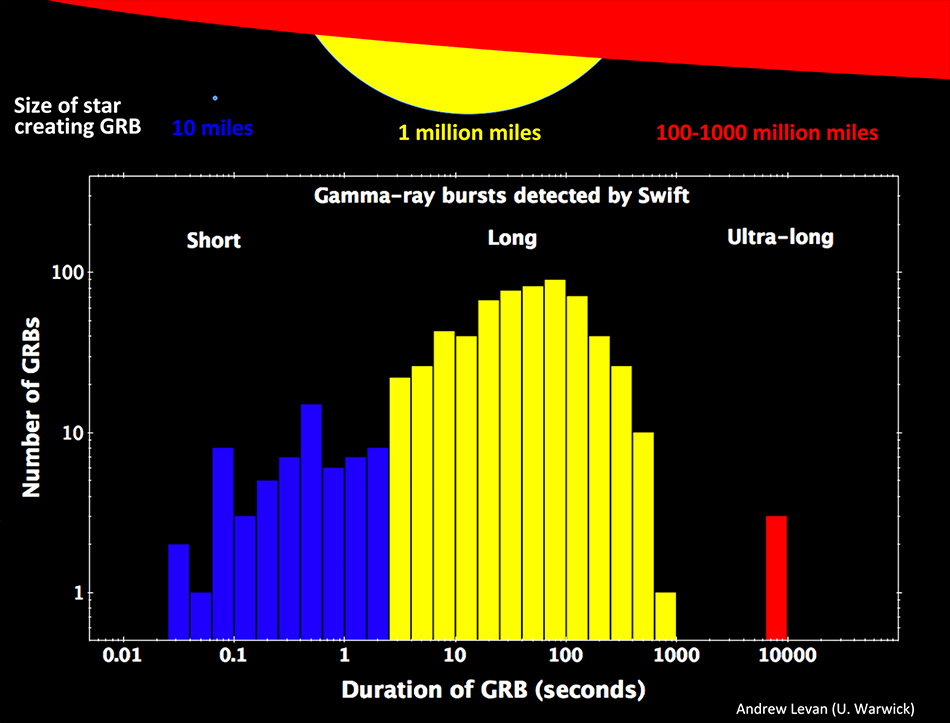
 Credit: Andrew Levan
Credit: Andrew Levan
Long, Long Burst
Gamma-ray bursts are bright flashes of high energy gamma rays produced by the total destruction of a star. Astronomers divide these events into short bursts, which last only 2 seconds or less, and long bursts. Short bursts are thought to represent the merger of low-mass compact objects, like neutron stars. Long bursts can last up to minutes, and are thought to mark the birth of a black hole formed by the titanic collapse of the core of a massive star. Recently the Swift Gamma-ray burst telescope has identified rare bursts that last for hours. The longest burst ever identified occurred on Dec 9, 2011, and had a duration of nearly 7 hours. These "ultra-long" bursts are a puzzle: how can an extremely violent event like a gamma-ray burst, representing possibly the most powerful explosions since the Big Bang, last so long? Astronomers have examined several possible mechanisms, including highly magnetized neutron stars, strange components in the burst, or other exotic processes. The most likely explanation is believed to be the death of a very massive star. But for normal massive stars, strong stellar winds carry away a significant amount of mass prior to the core collapse event. Ultra-long bursts require that a large amount of mass remain in the stellar envelope to fuel the burst for hours. This suggests that the collapsing star must have had a very weak wind, possibly due to the absence of heavy elements in the star's atmosphere. Because the first stars that formed contained no elements heavier than helium, it may be that such ultra-long bursts were common in the early Universe.
Published: April 22, 2013
<
HEA Dictionary ● Archive
● Search HEAPOW
● Other Languages
● HEAPOW on Facebook
● Download all Images
● Education ● HEAD
>

Each week the HEASARC
brings you new, exciting and beautiful images from X-ray and Gamma ray
astronomy. Check back each week and be sure to check out the HEAPOW archive!
Page Author: Dr. Michael F. Corcoran
Last modified Tuesday, 27-Feb-2024 10:15:23 EST


